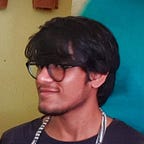Getting started with WordPress Development — Setup
WordPress is a freakishly popular open-source Content Management System. Built on PHP and MySQL, this web platform can be used to built blogging sites, e-commerce applications and more. It is very powerful and not that difficult to start with.
I won’t waste much of your time on pointless theoretical mumbo-jumbo (for now) and we’ll dive in to our Mission 1 — The Set-Up.
What you’ll need —
- At least a primal knowledge of HTML, CSS and JavaScript
- Basic PHP will come in handy
Side note : Though this is the recommended stack to know before getting started into WordPress, but I had absolutely very basic PHP knowledge when I dived into WordPress. I learnt it while working like almost everyone.
Let’s setup WordPress on your local environment to begin development.
Mission Step 1 : Install XAMPP.
XAMPP is used to give you a local server environment. Get the XAMPP application here as per your machine configurations and begin installation.
In case you have antivirus software running, you might get a warning prompt which you just have to proceed with yes to get to installer window.
You’ll get a welcome installer window like this :
Click on Next and you get to select the components you’ll need on a window like this :
You just need to select MySQL and phpMyAdmin and deselect the rest when you’re just starting out. Click on Next and proceed through the process. You don’t need to install any additional dependencies and just proceed.
If everything went smooth, you should see something like this when you open the XAMPP application :
Start the Apache and MySQL modules on the control panel by clicking on (pfft, D’uh) the Start button. Now for the mission completion, head over to your browser and hit — ‘http://localhost’.
See something like this? Then VOILA! You are done with Mission Step 1.
Mission Step 2 : Download WordPress.
This is an easy one. Just head over to the wordpress.org and download WordPress. Easy.
Now if you went through the default setup, you should have a xampp folder in your C: drive. Browser inside to the htdocs folder.
This is an interesting folder. Just for fun, just create a folder and write a simple index.html to display a simple “Hello World” in <h1> tag. Head over to your browser and hit localhost/<your_folder_name>/. You should see the Hello World message. Tada! This is your local server setup.
Inside this htdocs folder, create your test folder. Now extract the WordPress zip here inside the test.
And we’re done with Mission Step 2!
Mission Step 3 : Setup Database for WordPress.
Now one of the most important things : Database. For this, open up your XAMPP Control and click on Admin button on MySQL module OR you can go to ‘http://localhost/phymyadmin’ on your browser.
You’ll be on the phpMyAdmin page where you can click on New on the left sidebar to create a new database. Give the name of the database on the box and you can leave the default options undisturbed and hit that Create button.
You can see and select the newly created database on the left sidebar on the phpMyAdmin panel.
In browser, go to you test project — http://localhost/test/. You’ll see the configuration setup page :
Select the language and proceed.
You’ll be on the config setup welcome page. All that this page tells is to configure your WordPress site, you’ll need to provide some information that gets populated on the wp-config.php file, the heart of the application. Proceed.
Populate the data on the config-setup page :
- Database Name : <name_of_the_db_created_on_phpMyAdmin_panel>
- Username : root
- Password : <leave_blank>
Done. Hit Submit and Proceed on the next page. That’s it!
You can view your WordPress site locally by going to http://localhost/<your_site_name>.
Your setup is done. Good Job!
Next, I’ll post an article on creating posts and pages on WordPress.
Cheers!
